While learning where the enemy is and what he's doing before he does the same to you has been a part of warfare since one tribe first went out to ambush another, it's only comparatively recently that efforts have been made to integrate and disseminate it on a large scale. Jackie Fisher first came up with the concept while in command of the Mediterranean Fleet, and the RN developed it into to a key weapon in WWI. Later, the British and Americans used similar techniques to plot incoming air raids, multiplying the effectiveness of their defenses. However, these systems were entirely manual, which meant that they could be overwhelmed by an opponent that launched large numbers of separate raids, or whose aircraft were fast enough to stay ahead of the plotters. To make matters worse, nuclear and standoff weapons meant that attackers had to be intercepted further out than ever before. During exercises in the early 50s, jet raids on US carrier groups had maybe a 1 in 3 chance of being successfully intercepted. Incremental improvements could help this some, but radical solutions would be needed to solve the problem properly.
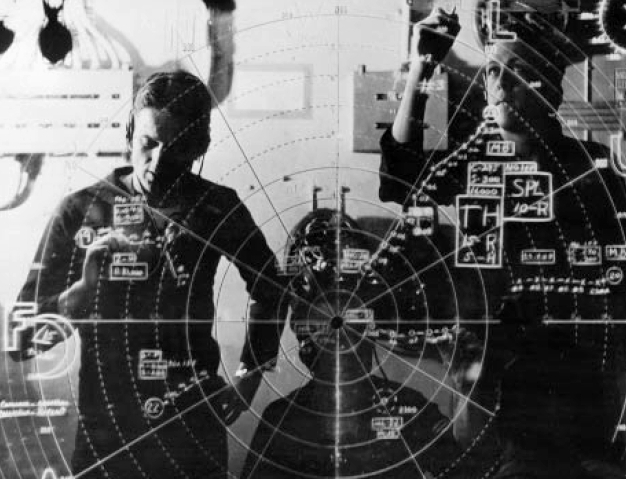
Two solutions immediately presented themselves: decentralization and automation. Decentralization could take any number of forms. Broadcast control abandoned any attempt to have controllers vector fighters in and instead simply gave the position and course of incoming raids, letting fighters plot their own intercepts. In other cases, it involved assigning sectors and CAP1 sections to specific ships, with a central control ship to coordinate when raids crossed sector boundaries. Maybe one ship would be in charge of tracking friendlies, so that the CAP wasn't wasted chasing down the ASW patrol. However, decentralized control demanded good communications, which was a problem in an era limited to voice radio and teletype, and even decentralized control only helped to resolve the problems of moving information from one plot to another.
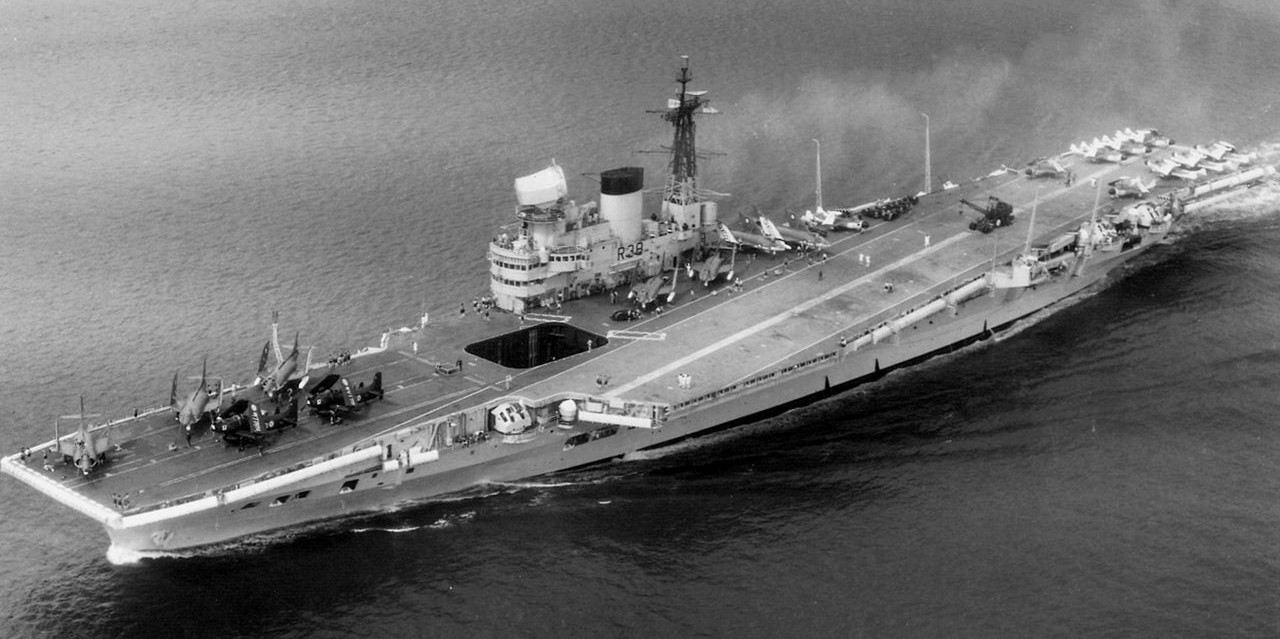
HMS Victorious showing the drum of the Type 984 above her bridge
The first serious efforts to automate the CIC were made by the British, in the form of the Comprehensive Display System. This was an analog system, not a digital one, but most of the features that would define even modern air-defense systems like Aegis were already there. Operators would "capture" radar blips with their joysticks, passing them to an analog memory unit. These units stored not only position, but also track number, rough altitude, if the target was friendly or hostile, and the size of the group. The data could then be sent to displays anywhere in the ship, and the output could be filtered by altitude, raid size, status, and so on. The first prototype had several major limitations. It was unable to project the motion of the track, so operators had to provide manual updates. It also used potentiometers for data storage, making it a maintenance nightmare. The production version added the ability to estimate the position of moving targets, so operators only had to update tracks when they changed course, and used capacitors for data storage, improving reliability. The system was intended to get data from the new and very long-range Type 984 radar, the two combining to give the RN an unmatched view of the air situation. However, the Type 984 was too large and expensive to fit on the new County class destroyers that were to escort the carriers. To give them a view of the long-range air picture, a digital datalink2 was developed to pass CDS tracks from the carrier to the destroyers. The USN was so impressed by the first prototype that they immediately bought one for themselves, and developed their own version, known as Electronic Data System (EDS), which was fitted to a few ships before it was overtaken by digital systems.
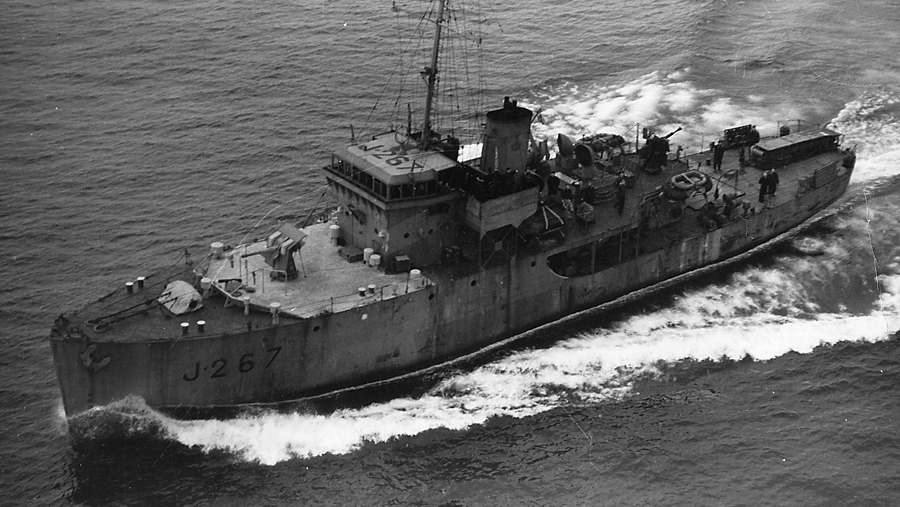
HMCS Digby, one of the minesweepers used for DATAR trials
The first all-digital naval combat data system came from an unlikely source. The Royal Canadian Navy knew about CDS, but some of its officers, in partnership with Ferranti Canada, had become convinced that a digital system would be far superior. The system they developed, known as DATAR, could track 64 targets over an area 80 nm on a side, and transmit them to other ships or shore stations. This was revolutionary, and despite the reliability problems stemming from its 3,800 vacuum tubes, the system worked, including a test in 1953 where two minesweepers on Lake Ontario transmitted radar and sonar data to each other. Ultimately, however, DATAR was doomed by several factors. First, the major naval powers had already begun to develop their own digital systems, limiting export potential. Second, the Canadian government was unwilling to pay for a solid-state system, which would have been necessary to cure the reliability problems. Third, a fire destroyed one of the two completed systems, and it was judged uneconomical to rebuild it. However, one of the architects went on to play a major part in the later American system.3
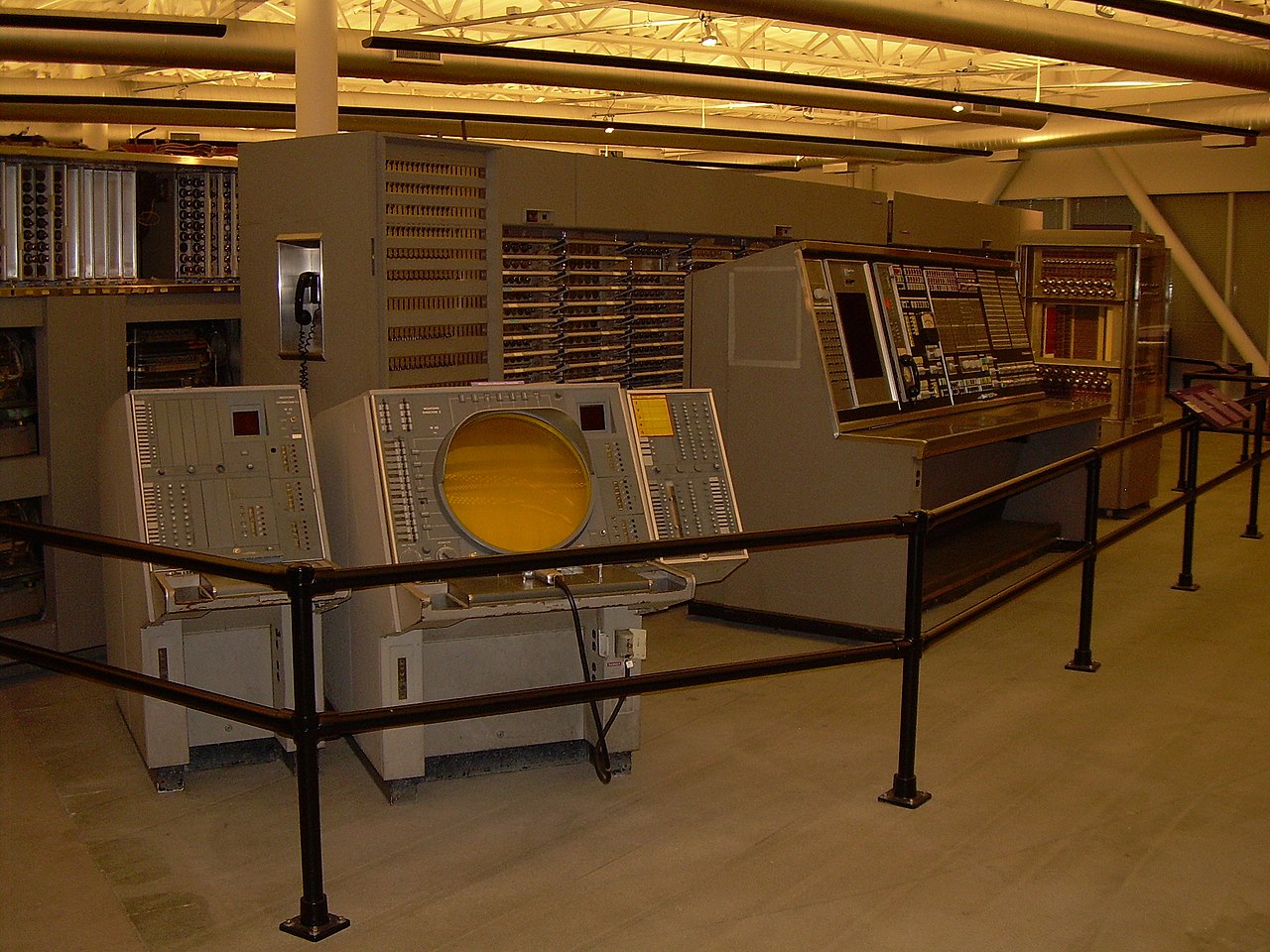
SAGE consoles
Despite the early lead of the Commonwealth powers, the first digital tactical data system to make it into widespread service would be American, and it would be on land, not at sea. The jet bomber had hit land-based air defense systems as hard as their naval counterparts, and the US Air Force needed a way to stop the hordes of Soviet bombers they expected to descend on the US in case of war. The result was SAGE, the Semi-Automatic Ground Environment, a system that could combine data from radars across the US and Canada and transform it into a unified picture. Each of the 22 direction centers was built around a 250-ton FSQ-7, the largest single computer ever built, which could in theory track everything in the air across its sector and use that to direct interceptors onto incoming bombers. The interceptors were to be controlled by a special data link, known as Link 4, which could pass commands directly to the autopilot and fly the aircraft through all phases of the mission except takeoff and landing. It's still used today to control aircraft during automatic landings.
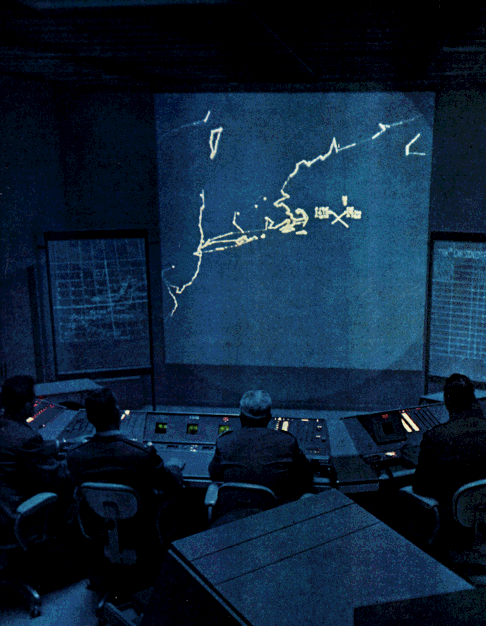
A SAGE control room
And much as the Dowding System to defend Britain lead to the CIC at sea, SAGE led to a naval equivalent, the Naval Tactical Data System or NTDS. We'll discuss it in more detail next time.
1 Combat Air Patrol. ⇑
2 It was digital for better noise resistance, and was still transmitting analog data. ⇑
3 Interestingly, the trackball was originally invented as a controller for CDS, but it was abandoned and joysticks were used instead. The DATAR team developed the idea further, at one point using a bowling ball in the prototype. OK, it was from something called five-pin bowling where the ball is hand-sized, but the image is funny. ⇑

Comments
I wonder how the Soviet surface fleet approached this problem in the early days of the cold war, but I haven't seen too much literature on their techniques. Any recommendations?
There's a section on their stuff in Friedman's Network-Centric Warfare, which has been the basis for this series so far. I'll take a look when I get a chance.
Unfortunately, the book doesn't have anything on air defense systems, although there's extensive coverage of their strategic systems. I'd guess that in this era, naval air defense was primarily provided by the PVO. And I have no clue what they were doing, although I'm sure someone does.